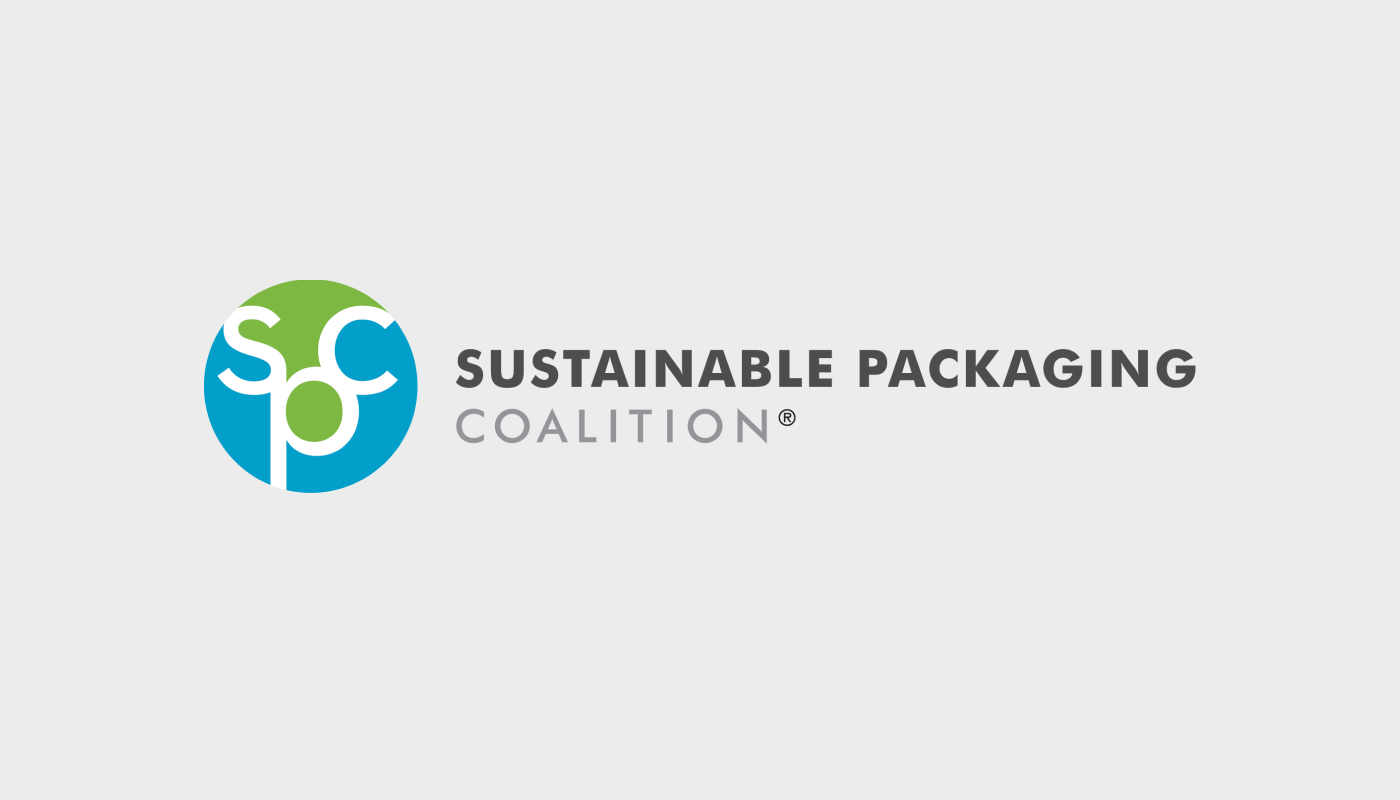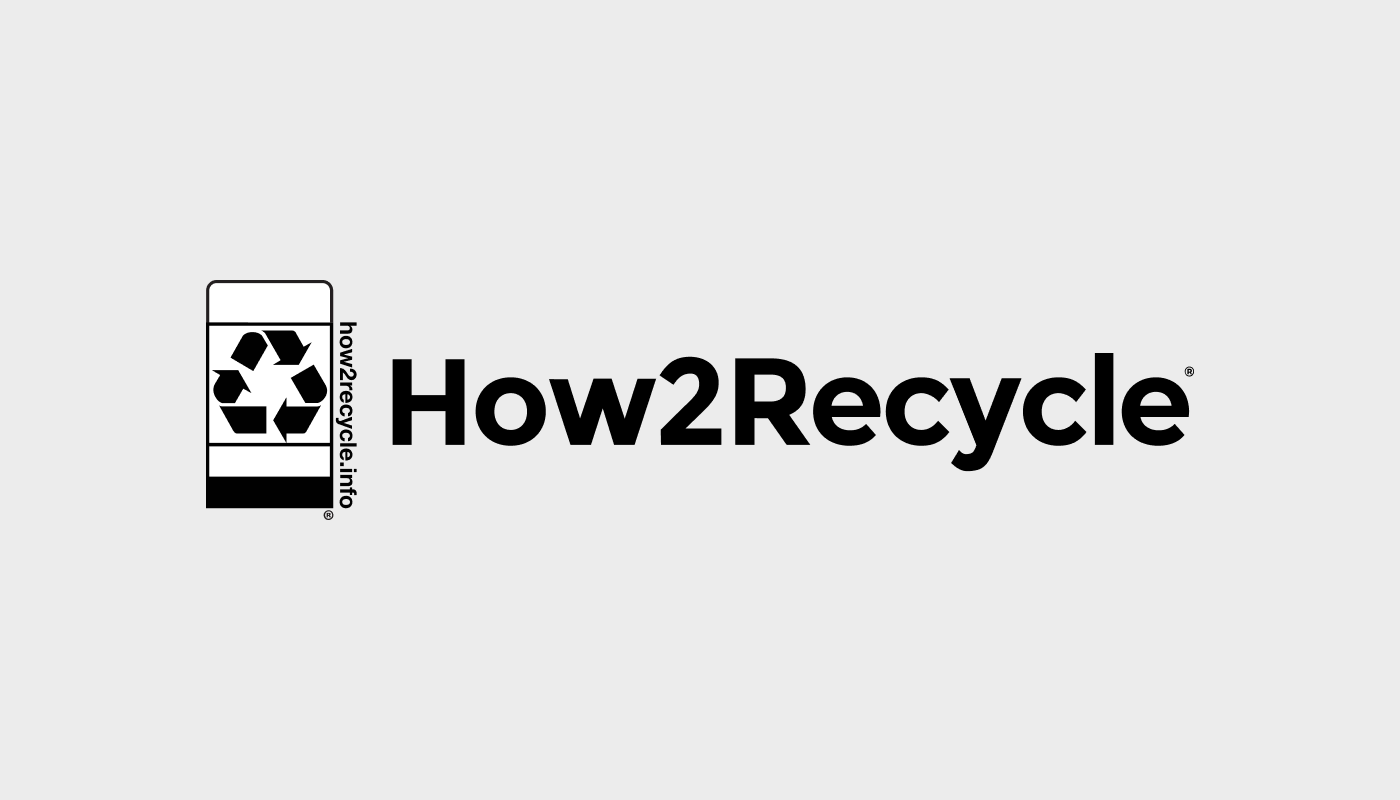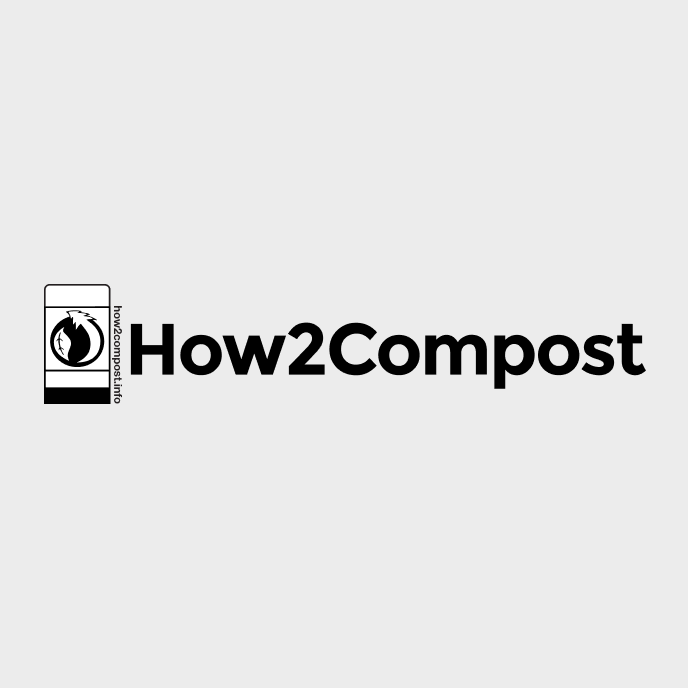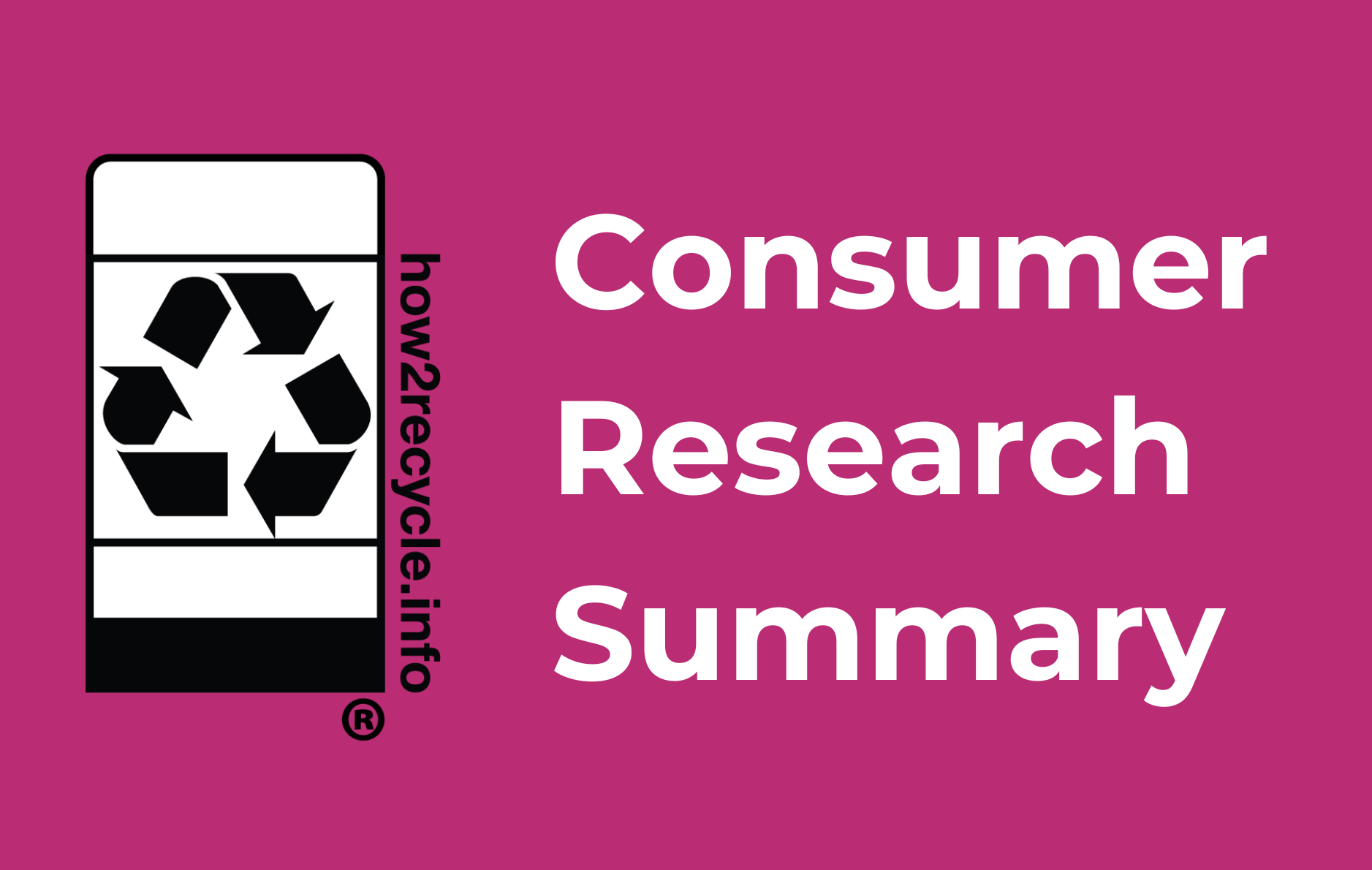Overview & Background
In late 2021, the How2Recycle® program contracted a consumer research firm to conduct research into consumer perceptions of the How2Recycle labels. The primary purpose of this research was to assess the alignment of the intended label meanings with the perceived label messages. Information about consumer recycling behavior was also included as a secondary research objective.
In this consumer research, after completing a short questionnaire about their background, respondents were asked to rate their agreement with multiple definitions of recyclable. Then, they were asked to rate agreement with possible definitions of the four How2Recycle label categories: Widely Recyclable, Check Locally, Store Drop-off, and Not Yet Recyclable. Finally, respondents were asked to “dispose” of products with each of the How2Recycle label types to assess the labels in a usage simulation.
Definition Alignment
The first definition that was assessed was consumer’s perceptions of what it means for something to be recyclable. The Federal Trade Commission (FTC) has provided guidance on recyclability claims in the Green Guides, and that guidance is the foundation of the How2Recycle operating definition of recyclable. However, having an operational definition that is aligned with the Green Guides does not guarantee consumers themselves would agree with our operational definition. Thus, this study was conducted to assure consumers would not feel misled by recyclability messages due to misalignment with their conceptualization of the terminology.
The list of possible definitions respondents rated included a spectrum of how much recycling in practice is required for something to be considered recyclable. The spectrum of possible interpretations of recyclable included broadest in scope concept of “theoretic recyclability” to narrowest in scope concept of “always recycled in practice”. Additionally, some of the definitions were of common incorrect misconceptions (i.e. “recyclable means a product is biodegradable” or “recyclable means a product is made from recycled content”).
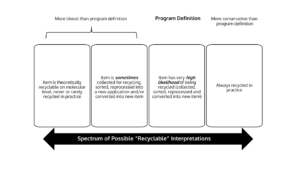
Figure 1. Spectrum of possible interpretations of recyclable, organized from broadest in scope to narrowest in scope.
Results for the assessment of alignment with “recyclability” indicate approximately 30% of respondents agreed with the operating conceptual framework that recyclable items have to be commonly recycled in practice, not just in theory. The second most agreed-upon (approximately 20% of respondents) was the concept of theoretic recyclability. Theoretic recyclability is broader in scope than How2Recycle’s operational definition; thus, consumers would not be misled as theoretical recyclability as the minimum standard for “recyclable” would also include items that are recycled in practice.
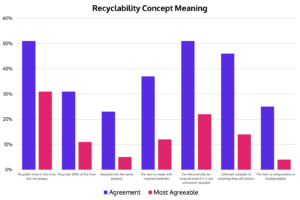
Figure 2. Agreement with possible definitions of recyclability
Overall, consumers were also aligned with the intended messages of the Widely Recyclable, Not Yet Recyclable, and Check Locally labels. When forced to choose between access based messages (“recyclable in most communities” or “recycle in some communities” and recycling rate based messages (“recycled most of the time but not always” or “recycled most of the time by participating programs”), more respondents agreed with recycling access based interpretations of the Widely Recyclable and Check Locally labels. However, it is important to note that the How2Recycle requirements for use of these labels includes both access to recycling programs that collect the packaging format and proof of recycling in practice. There is less consensus in agreement of the intended message of the Store Drop-off label. This indication of consumer confusion about Store Drop-off recycling has necessitated plans to dedicate further research efforts to consumer understanding of and participation in this recycling stream.
Label Usefulness
In the assessment of label use, the majority of participants correctly sorted the simulated packages into the correct disposal option according to the How2Recycle label. Participants were most accurate when disposing of a package with the “Widely Recyclable” label, and they were the least accurate when disposing of a package with the “Store Drop-off” label. These results indicate that the majority of consumers are receiving the intended message of the labels, but that there is room for improvement in consumer education about the variety of Store Drop-off recycling programs available beyond curbside recycling.
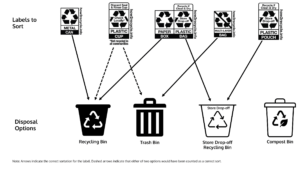
Figure 3. Illustration of the waste disposal option that was considered for each label option.
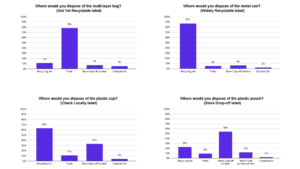
Figure 4. Results of the sortation task for single tiles. Correct sortation is illustrated above in figure 3.
In addition to assessing the accuracy of disposal for simpler packages with a single label tile, a multi-component package with multiple label tiles was also assessed. While the intended disposal option was the most selected, respondents were approximately 10% less likely to correctly identify the intended disposal option. This finding supports the How2Recycle recommendation of single material packaging where possible to increase the likelihood of material recovery.

Figure 5. Results of the sortation task for a package with multiple labels. Correct sortation is illustrated above in figure 3.
Participant Background
This study was conducted with a representative sample of the United States in terms of racial and ethnic background, and included people from all regions of the continental United States. The sample was recruited to have approximately 80% of the sample being made up of people who report recycling and approximately 20% who do not participate in recycling due to the estimated proportion of recyclers to non-recyclers in the United States.
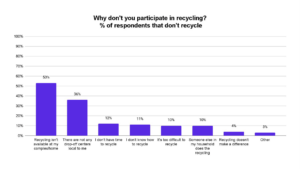
Figure 6. Reasons non-recyclers gave for not participating in recycling.
The results of the survey about consumer recycling behavior indicated that access is the leading reason non-recyclers are not recycling. Additionally, this portion of the survey revealed that the least participated in (23% of respondents) recycling program is Store Drop-off recycling. This low level of participation is likely a driver of confusion about the intended message of the Store Drop-off label. Curbside Recycling was the most participated in recycling program with a participation rate of 72%.
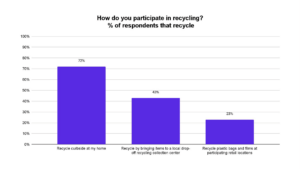
Figure 7. Recyclers participation rates for varied recycling programs.
Finally, consumers were asked about their familiarity and perception of the helpfulness of the How2Recycle label. Overall, 60% of respondents were familiar with the How2Recycle label, with 45% being “very familiar” and 15% being “somewhat familiar.” Likewise, the perceived helpfulness of the How2Recycle label was also highly rated. Overall, 53% of the respondents rated the How2Recycle label as “very helpful”, and 34% rated the How2Recycle label as “somewhat helpful” which indicates an overall helpfulness rating of 87%.
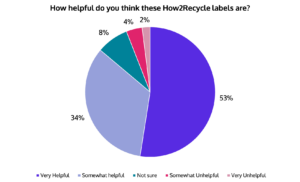
Figure 8. Perceived helpfulness of the How2Recycle labels.
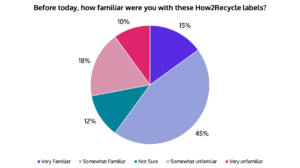
Figure 9. Familiarity with the How2Recycle labels.
Limitations
The primary limitation of the label use portion of the study is the external validity of an online survey methodology. To limit the biasing of participants’ responses, the “disposal scenario” was limited in detail, possibly leading to some confusion that could have been alleviated with more descriptive instructions. Additionally, while participants also were shown images of the products they were asked to dispose of to account for differences in packaging terminology, the presentation of a package as an image with the How2Recycle label oriented to the viewer is inherently different from how people interact with real, three dimensional packages in their daily lives. Additionally, it was assumed that participants would consider the package to be clean and dry when selecting a disposal option.
Future Research
While this study provided some more detailed information about the How2Recycle label’s communication with consumers, it also inspired questions to pursue with future research. For example, what level of empty is considered “empty” by a consumer when they are trying to recycle a package? Likewise, what level of clean is considered “clean and dry” by a consumer instructed to “Recycle if clean & dry” by a label? Additionally, more insight is needed into exactly what challenges or confusing elements are preventing increased uptake in store drop off recycling.
If you have a question about how the How2Recycle label is functioning as a communication tool, please reach out to how2recycle@greenblue.org.

